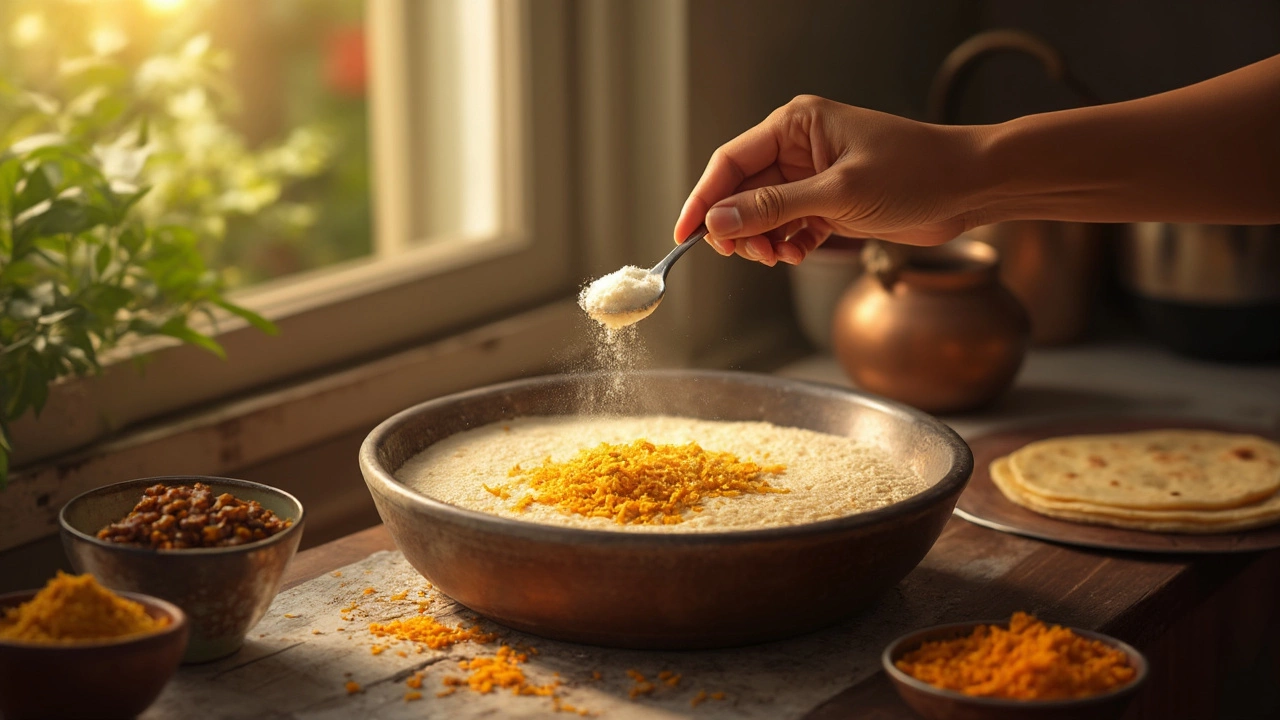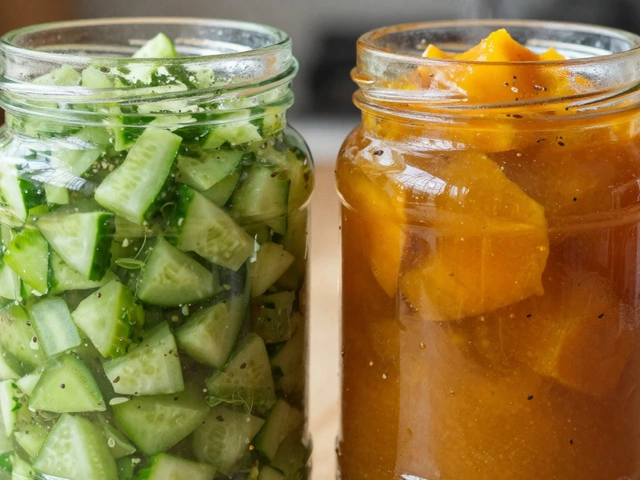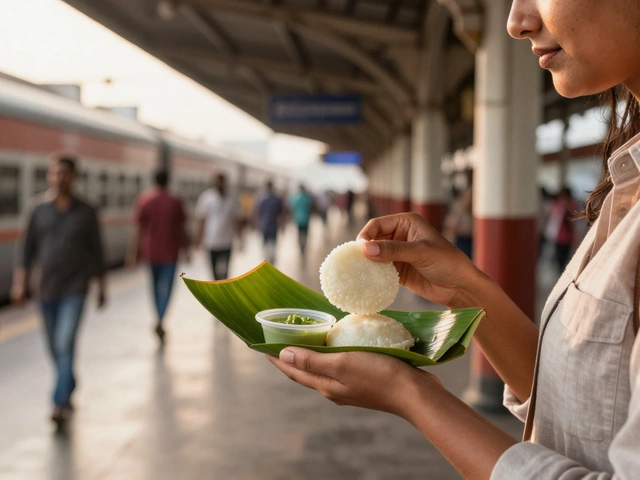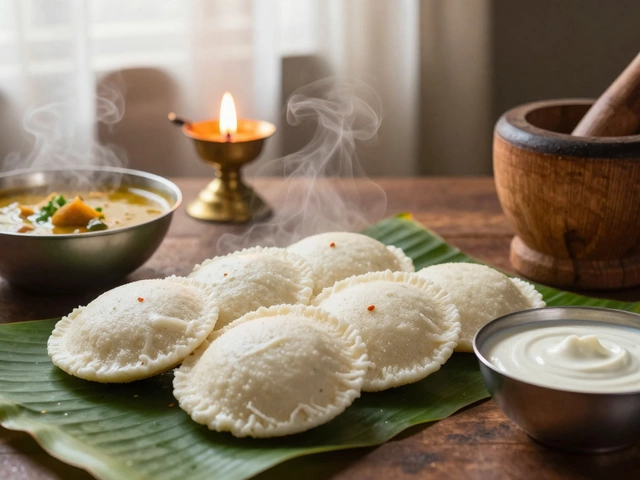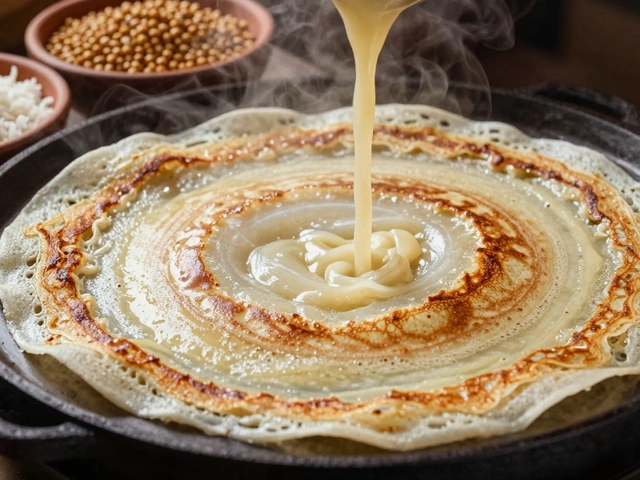If you've ever found your dosas coming out a bit too thick, or just not as bubbly as those from your favorite South Indian spot, you've probably thought about adding soda to the batter. Guess what? It’s not just some grandma hack—it’s actually a pretty smart kitchen move.
Adding soda (yep, that’s baking soda, not club soda) can seriously change the game. It helps boost the fermentation, making the batter lighter and helping those tiny air pockets form. That means crispier edges, a better golden color, and that satisfying 'snap' when you break a piece off.
But before you start dumping soda into every batch, you need to understand how it messes with the batter chemistry. Too little and nothing happens. Too much? You’ll end up with a weird aftertaste and flat dosas that look more like pancakes. Getting the balance right is key, and timing matters just as much as the amount.
- What Happens Inside Dosa Batter
- How Soda Actually Works
- When to Add Soda (And When to Skip It)
- Tips to Get the Best Results
- Busting Myths About Soda in Dosa
What Happens Inside Dosa Batter
Dosa batter starts simple—just rice and lentils, soaked and then ground until smooth. But the real magic kicks in during fermentation. When you leave the batter out overnight (sometimes longer if your kitchen’s chilly), natural wild yeast and bacteria get to work. They break down the carbohydrates and proteins, releasing carbon dioxide gas and building up those tiny bubbles you see in well-fermented batter.
This gas is what helps dosas turn out light and slightly tangy. If the batter doesn’t ferment enough, you end up with flat, dense crepes. If it over-ferments, though, it might turn sour and runny. The balance is pretty sensitive—humidity, temperature, and even the type of dal and rice you use can make a difference.
Here’s what typically happens during fermentation:
- Starch in rice and dal breaks down into simpler sugars.
- Yeast and lactic acid bacteria (mainly from the dal and environment) eat those sugars, releasing lactic acid and carbon dioxide.
- The batter thickens and doubles in volume, filled with trapped air pockets.
- Slight acidity from the lactic acid gives dosas their flavor and acts as a preservative too.
If your kitchen is cold or you’re in a rush, the process slows down, and your batter stays sad and flat. That’s when folks start thinking about quick fixes—like adding a small pinch of soda. Adding soda to dosa batter is a way to mimic or boost this natural bubbling, so you still get airy, crispy results even if nature didn’t cooperate overnight.
How Soda Actually Works
Baking soda isn’t just another random ingredient—it’s a game-changer in dosa batter. When you add soda, you’re giving the batter an instant kick to help it rise better and get bubbly. That’s all thanks to one thing: soda in dosa batter reacts with the natural acids from the fermented mix (mainly the urad dal and rice).
What happens here is simple chemistry. Baking soda, or sodium bicarbonate, releases carbon dioxide gas when it meets something acidic. In dosa batter, natural fermentation makes the batter slightly sour, creating just the right conditions for this fizz-up. All those tiny bubbles of CO2 get trapped in the batter, which makes the dosas come out fluffier and crispier.
Here’s a quick breakdown on the science:
- Baking soda is alkaline. Once mixed into the already-fermented, slightly acidic batter, it kicks off a reaction.
- This reaction creates carbon dioxide bubbles—these bubbles create air pockets, which puff up during cooking.
- More bubbles = crispier, lighter dosas that are golden with those signature holes all over.
Some folks even use club soda (carbonated water) instead of baking soda, but it’s way less common. Plus, club soda doesn’t give the same strong lift as actual baking soda.
| Ingredient | Main Effect in Batter |
|---|---|
| Baking Soda | Boosts bubbles, faster lift, lighter texture |
| Club Soda | Temporarily adds air, but less effective than baking soda |
| No Soda | Relies on fermentation (natural rise only) |
Just don’t get too excited—overdoing the soda can flatten the taste and make dosas taste almost soapy. Stick to the recommended pinch and always add soda just before cooking, not ahead of time. This way, the bubbles show up where and when you need them most: right on your hot pan.
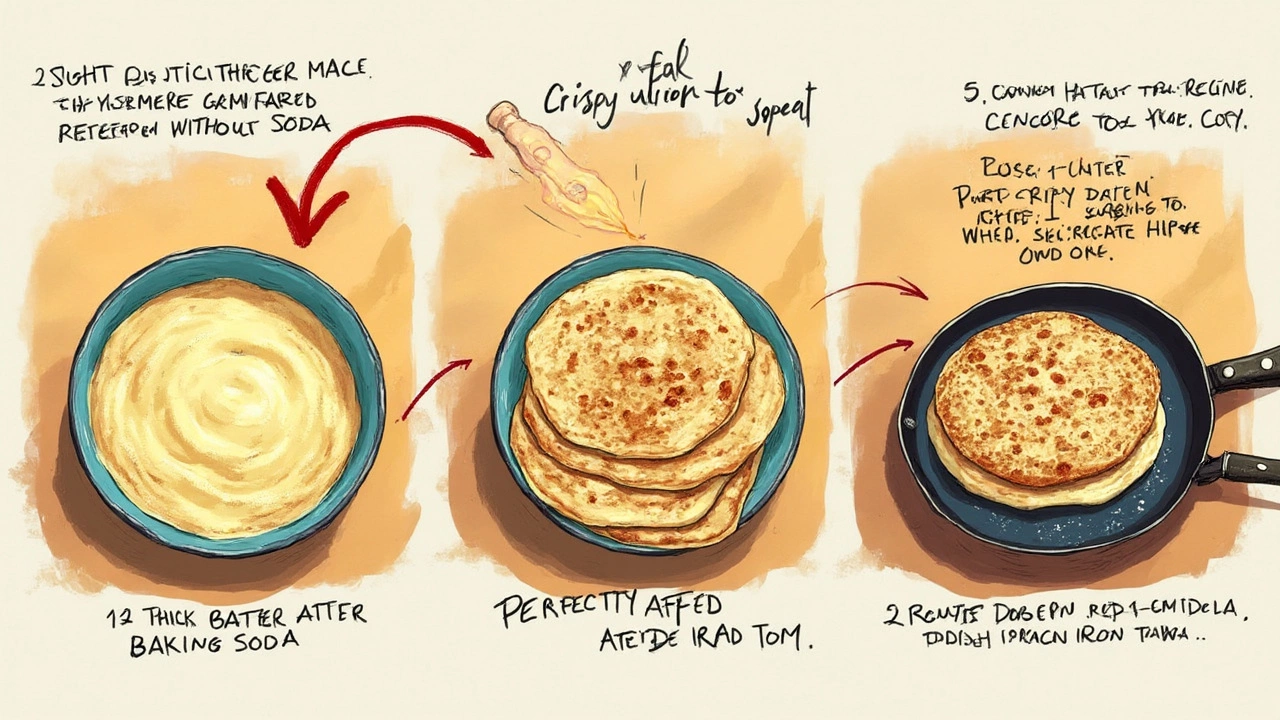
When to Add Soda (And When to Skip It)
This is where things get real. Not every batch of dosa batter needs soda. Sometimes, adding it actually ruins the vibe. So, when are you supposed to add it?
If your kitchen is warm and you’ve let your batter ferment overnight (usually about 8-12 hours), it’s usually airy and ready to go. No need for extra soda in this case. But, if you’re dealing with chilly weather, the batter might look lifeless even after hours. That’s when baking soda can be your secret weapon.
- You should add soda to dosa batter when it’s not bubbly or rising, especially in winter or if you’re short on fermentation time.
- If you’re using old or leftover batter from the fridge, soda can help bring it back to life.
- Planning to make dosas within a couple of hours instead of waiting half a day? Soda gives a quick lift.
How much is too much? Stick to about 1/8 teaspoon of baking soda for every two cups of batter. Any more, and you’ll taste it (not in a good way). The ideal time to add soda is right before cooking—mix it into the batter and let it sit for 5-10 minutes.
| Situation | Add Soda? | Notes |
|---|---|---|
| Fully fermented, bubbly batter | No | Skip soda — your batter's perfect. |
| Cold weather, slow fermentation | Yes | Soda speeds things up when batter won't rise. |
| Old/refrigerated batter | Yes | Helps restore fluffiness and airiness. |
| Fermenting for less than 6 hours | Yes | Gives a jumpstart, but don’t go overboard. |
| Hot and humid climates, overnight fermentation | No | Soda can make dosas taste soapy if used unnecessarily. |
By the way, don’t add soda way ahead of time. If you do, all that gas escapes and your batter falls flat anyway. Always mix it in right before you’re about to ladle onto the pan. Skip it if your batter is rising well—too much soda is the fastest way to kill flavor and crispiness.
Tips to Get the Best Results
Let’s make sure you’re getting the perfect dosa every time you use soda in your batter. Getting things just right comes down to when to add the soda, how much to use, and noticing the "sweet spot" for texture and taste. Here’s what’s worked for me after plenty of kitchen experiments (and a few flops along the way).
- soda in dosa batter only needs to be added at the last minute—right before you’re about to start making dosas. If you mix it in earlier, the bubbles escape and you lose that airy lift you’re going for.
- Stick to a pinch—about 1/8 teaspoon of baking soda for every 2 cups of batter. Too much, and you risk a soapy taste and a weird yellowish color.
- If your batter hasn’t fermented well overnight (maybe it’s cold, or your starter wasn’t strong), baking soda can help save the batch. But if the batter has already doubled and is bubbly, skip the soda so you don’t ruin the flavor.
- Add a teaspoon of lemon juice or a tablespoon of yogurt right after adding baking soda to help balance the flavor and activate the soda. This helps avoid that metallic taste you sometimes get.
- Once you’ve added soda, don’t let the batter sit around. Start pouring dosas onto your hot pan right away, or you’ll lose the bubbles and get flat results.
Check out this cheat sheet for dosing and results:
| Batter Amount | Baking Soda | Ideal Add-Ons | Expected Result |
|---|---|---|---|
| 2 cups | 1/8 tsp | 1 tsp lemon juice | Good lift, neutral taste |
| 4 cups | 1/4 tsp | 1 tbsp yogurt | Crispier, no aftertaste |
| 2 cups | 1/4 tsp | — | Overly spongy, slight soapy taste |
I always tell friends: don’t stress if the weather or time messes with your fermentation—soda can be a total game-changer. And hey, if your first dosa comes out wonky, you’ll know if the batter needs a tiny tweak. Practice makes those crispy circles possible, promise.
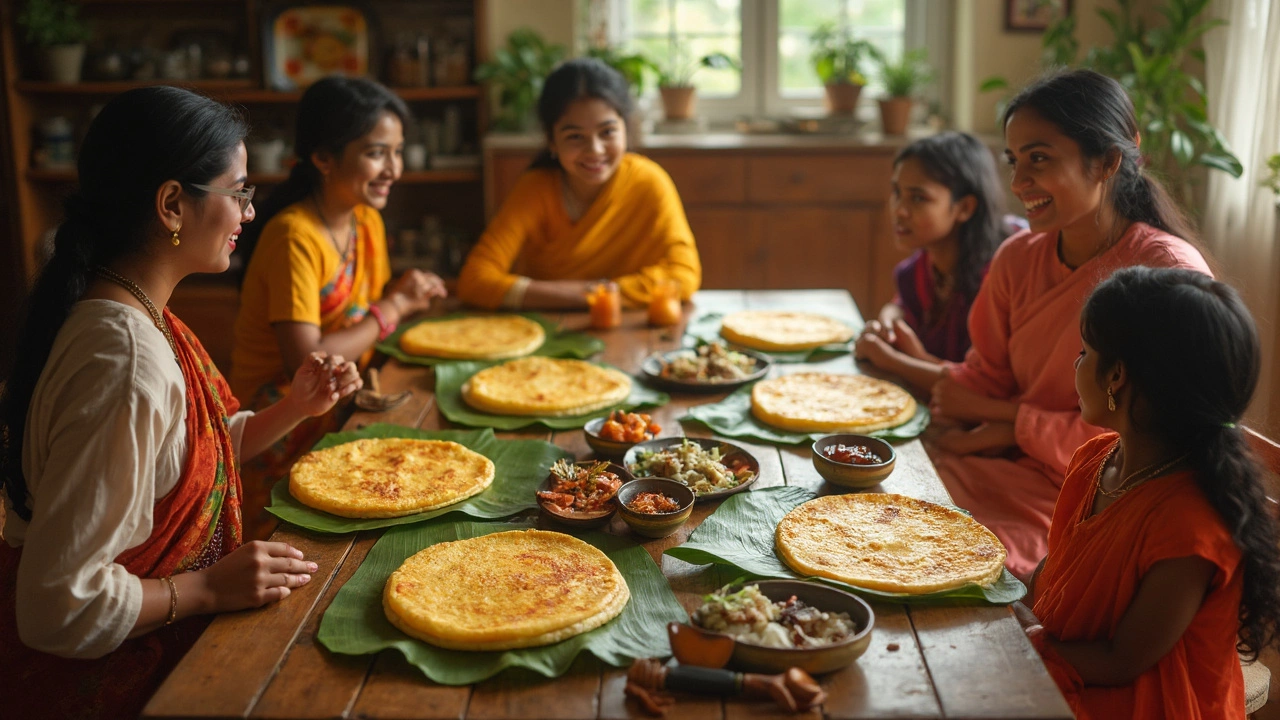
Busting Myths About Soda in Dosa
The internet is full of stories and kitchen debates about adding soda to dosa batter. Let’s clear up the confusion with some straight facts, so you know exactly what you’re working with.
First, not every dosa needs soda. Most traditional recipes rely on natural fermentation. According to a 2022 article in the Food Research International Journal, the best flavor actually comes from letting the batter ferment overnight, which develops those classic tangy notes. Soda just gives a quick boost when fermentation isn’t ideal—like on cold days or when you’re short on time.
"Baking soda can act as a backup for home cooks to get airy, crisp dosas even when the batter hasn’t fully fermented," explains chef Nita Mehta in her dosa masterclass. "But it shouldn’t replace traditional fermentation for taste."
Another myth? People worry soda will ruin the batter’s taste. That only happens if you go overboard. The sweet spot is about 1/8 teaspoon per 2 cups of batter. More than that and your dosas can taste soapy and weird.
Some also think adding soda means you can totally skip fermentation. That’s not true either. Skip fermentation and you get bland, lifeless dosas that might puff up, but they’re pretty flavorless. Soda is a helper, not a substitute.
Let’s look at some dos and don’ts so you can put these myths to rest for good:
- Do use soda as a last-minute fix, especially if your kitchen is chilly.
- Don’t add soda until right before you cook—otherwise, the bubbles escape and you lose the benefit.
- Do measure carefully. A pinch is all you need.
- Don’t try to save old, sour batter with soda. That taste won’t go away.
Here’s a quick look at what happens with and without soda in the soda in dosa batter approach:
| Condition | Texture | Taste | Color |
|---|---|---|---|
| Traditional (No Soda) | Light, crisp | Complex, tangy | Pale gold |
| Soda Added | Extra airy, slightly spongy | Milder, sometimes slightly soapy if overdone | Golden, with extra bubbles |
Basically, soda is a solid backup, not a magic fix. If your fermentation game is strong, you might not need it at all—but it’s a handy trick when time or weather works against you.
